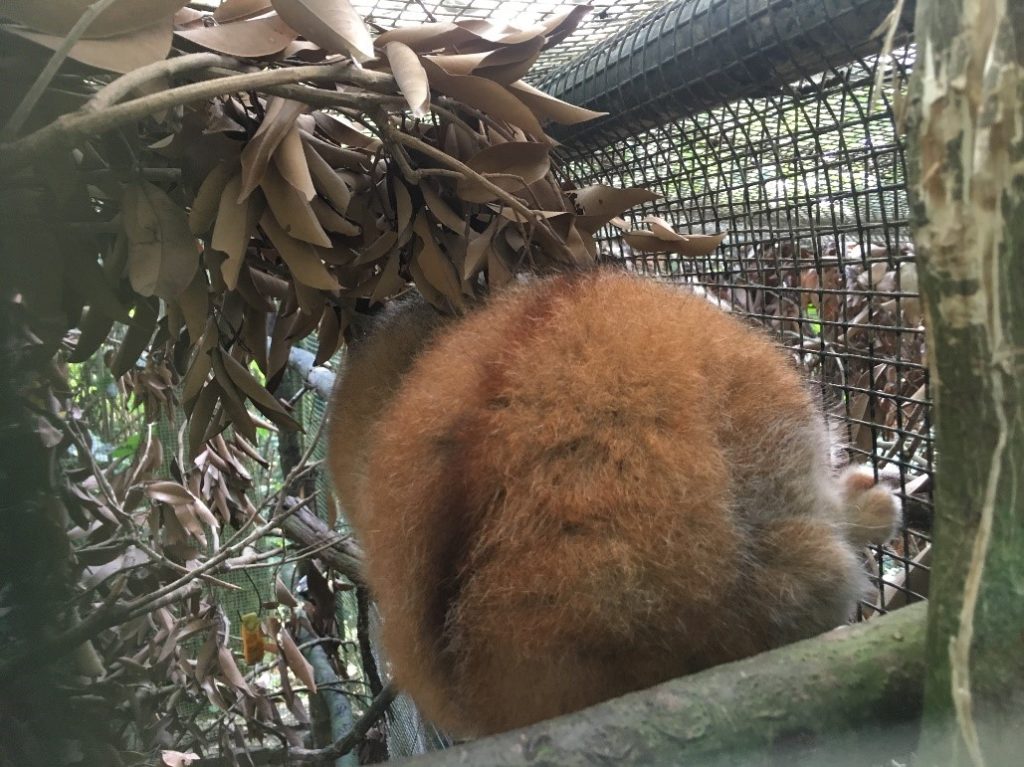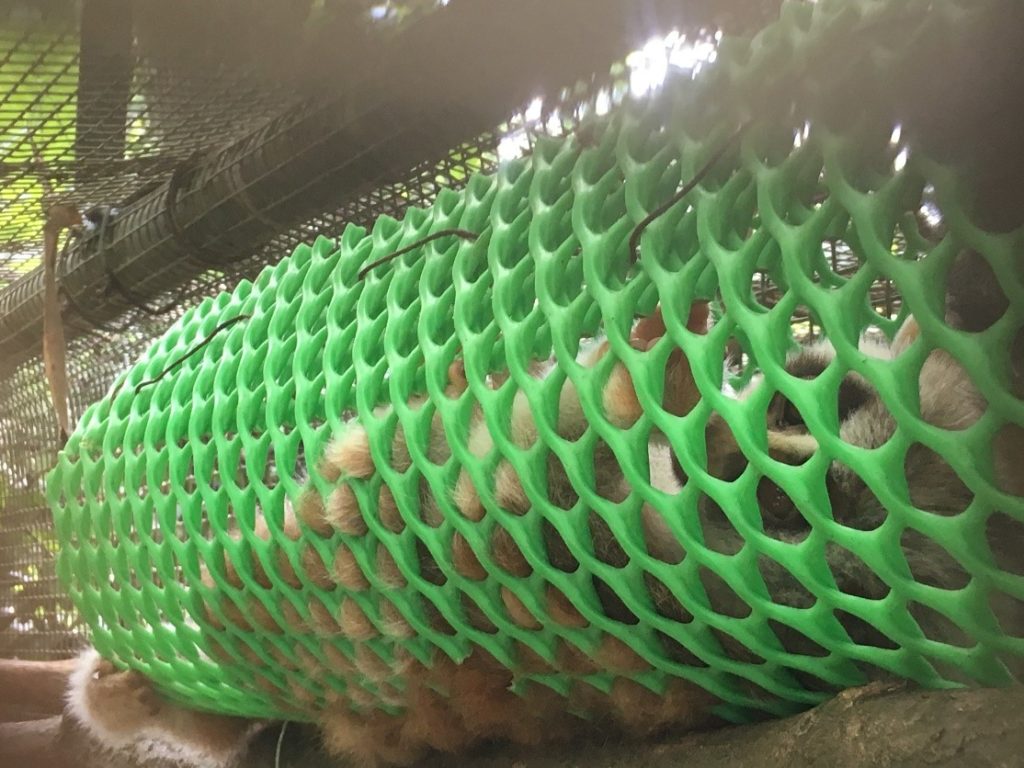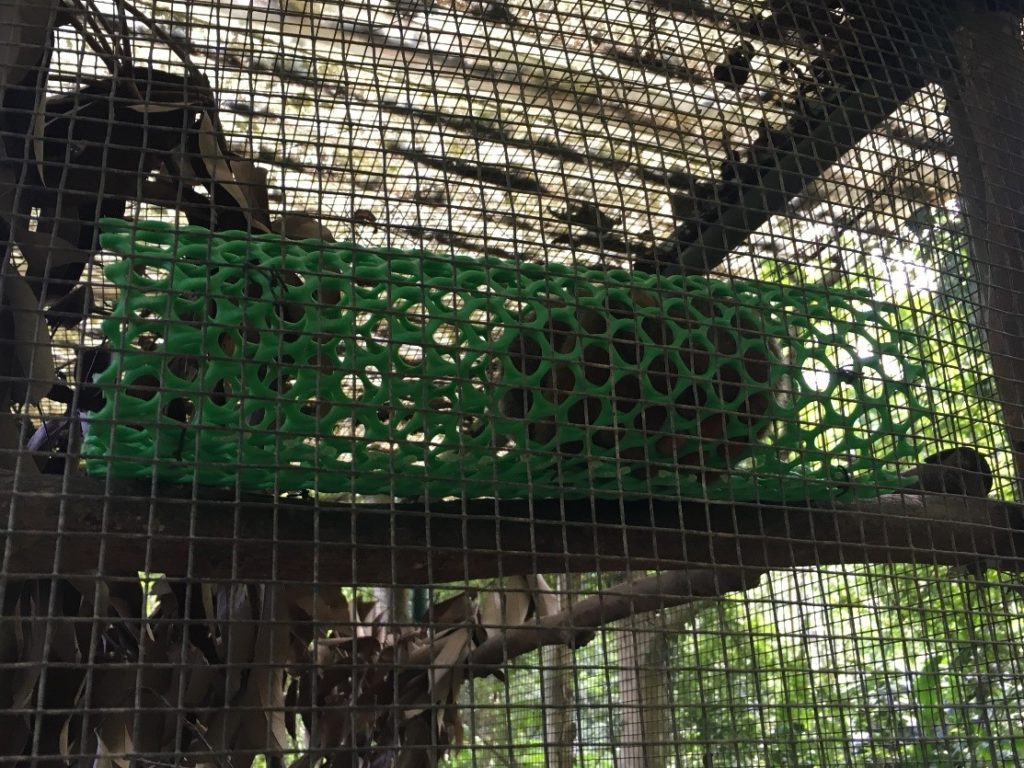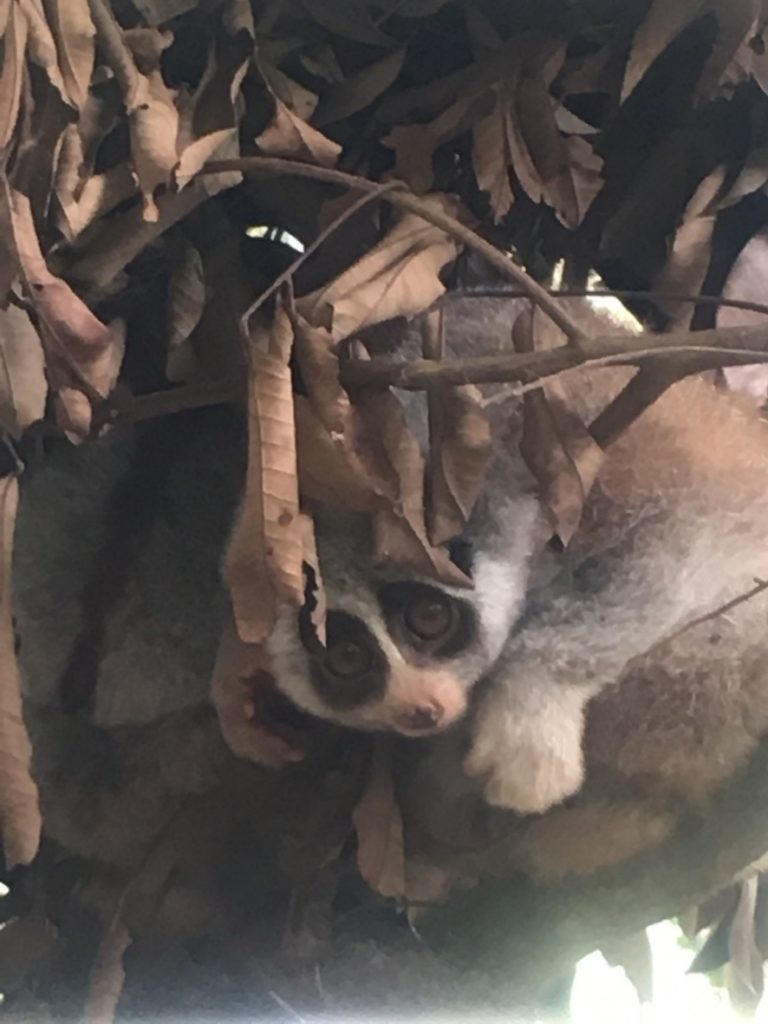Hello again from Brittany at the Endangered Primate Rescue Center in Cuc Phuong, Vietnam with another Culi Tuesday! Here in Vietnam, there are two species of slow loris: 1) the Bengal slow loris, called cu li lớn, meaning great/big slow loris and 2) the pygmy slow loris, called cu li nhỏ, meaning small slow loris. Here at the EPRC, there a quite a few more pygmy lorises than Bengal lorises. (I’m wondering if relative abundance in with wild plays a factor, or if perhaps pygmy lorises are more valued on the market here and thus trafficked more often? It’s something for me to think about!)

Loris main hobby: sleeping
This week, I thought I’d talk about lorises and one of my favorite hobbies: sleeping! It’s been getting pretty hot here the last few days, and I know that even the lorises are feeling it by their changing sleeping habits! As slow lorises are nocturnal primates, the majority of the time I see them at the EPRC they are asleep. And, I’ve noticed that, instead of their usual tight sleeping balls, at least some of the lorises have started to lounge out these past few days.

Loris enclosures
All the loris enclosures at the EPRC have green plastic, mesh-like tubes available for them. When it comes to sleeping, just from casual observation, it’s clear that some prefer the tubes, some prefer branches, and some like to use both. And while it used to be thought that lorises were solitary animals, it’s clear that when it comes to sleeping, they always choose to be very close to each other. Two Bengal slow lorises, a male and a female, that I would often see in tight balls right next to each other sleeping on this branch regularly. (You can see the second one’s back peeking out behind the one in front.) When they sleep on this branch, they usually hold onto the enclosure’s wire for support.

Loris stretching
The same two Bengal lorises as above, in there other frequent sleeping spot, the green tube. When curled up in the tube, they do not grasp anything. The past couple days as it’s started getting hotter, they’ve began stretching out when they sleep. It may be hard to see in this picture, but one of the lorises feet are sticking out the end of the tube with its face obscured. The second is closer, with its eyes open staring at me while I take the picture. A different loris in a green tube, showing the usual ball they sleep in. The tubes are always in the top portion of the enclosure and make it so that the lorises don’t have to cling onto wire, which might be why many of the lorises enjoy sleeping in them.

Where’s Waldo?
One last picture! Two more Bengal lorises cuddled close. When the lorises aren’t sleeping in the green tube, trying to find them during the day is like a game of ‘Where’s Waldo?’. They often sleep in the one of the areas in their enclosure more densely covered in leaves and are camouflaged well. Them being difficult to find is great, though, considering one of their main predators in the wild in Vietnam is humans. At the EPRC, they usually sleep well throughout the hubbub of the day, but occasionally one wakes up at stares you down, allowing for cute pics, while simultaneously making you feel guilty for wondering if you woke them up! For next week’s Culi Tuesday, I probably talk about either loris release happenings or the new enclosures! There’s always a lot going on here at the Endangered Primate Rescue Center, so I hope you keep reading! BRITTANY RAPONE

